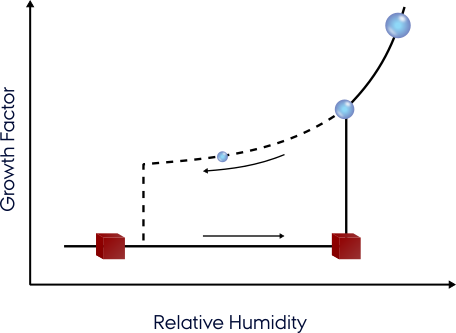
As aerosols are cycled through the atmosphere, they are often exposed to a range of different relative humidity (RH) conditions. Aerosol hygroscopicity, i.e., the interaction of aerosol particles with ambient water vapor, is an important property of atmospheric aerosols. Hygroscopicity influences particle water content, which governs e.g. particle reactivity. The aerosol water content also determines the total mass of particulate matter, which is key for their ability to scatter and absorb radiation, i.e. the aerosol-radiation interactions (ARI). Thus, in order to predict the chemistry in atmospheric aerosols and to capture their effects for climate, an understanding of aerosol hygroscopicity is critical.
In our group, we use a humidified tandem differential mobility analyzer to study the hygroscopic growth of individual, airborne particles, which denotes their ability to take up water at RH < 100%. We are currently studying and comparing these hygroscopic growth factors of different aerosol types.